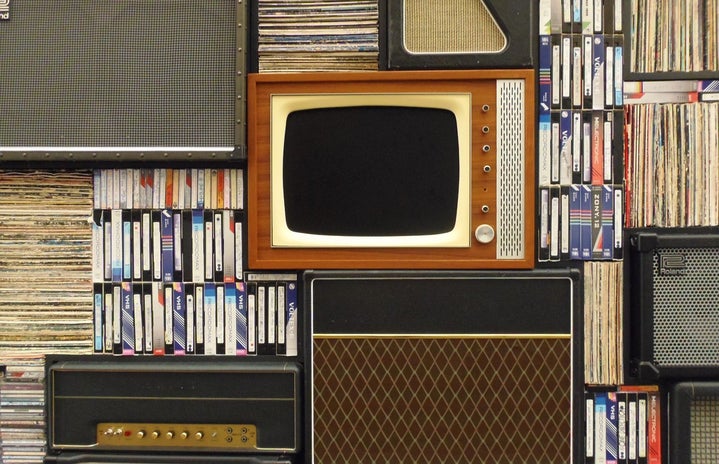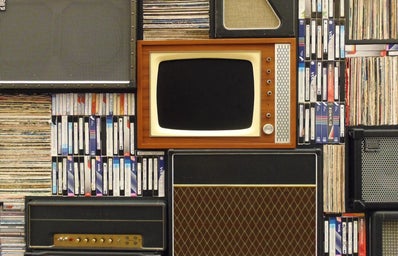Edited By: Mythili Kamath
Excerpt: From Apu in ‘The Simpsons’ to Raj from ‘The Big Bang Theory’, Indian characters occupy a very (stereo-)typical space in popular media. The association of these identities with being Indian not only has an impact on how others generalize the Indian identity but also on how we view ourselves – the internalization of our identity as the “Other.” Talking about the “Indian identity” may on the whole be self-defeating. Can a singular characterization of the “Indian” actually exist as a monolith?
Keywords: Indian characterization, identity, representation
“Do you require guidance in any other language? Our available options are English and Hindi.”
I stared, stock-still for a moment. The woman, an exhausted assistant who seemed like she was about to pass out any second now, raised her eyebrow as I opened my mouth and closed it again. “English works,” I replied finally. As I spoke the words, I instantly regretted it. There was something almost embarrassing about the way I spoke English and the way my accent was exaggerated, almost comically, against her “pure” American accent.
I remember scoffing at the ridiculous “Indian” accents present in Western media and thinking to myself: “Does this interviewer look at me and see the geeky Indian kid who can barely string a sentence together in English?” Now, it was almost as though I was that Indian kid. The assistant seemed annoyed because my choice of English meant that she would have to continue assisting me, rather than pawning me off to someone else who spoke Hindi. As our interview progressed, through my broken English – which seemed to be doing fine before the interview – I sighed.
I should have just chosen Hindi.
Whether it’s in popular media or even throw-away jokes, stereotypes associated with what it is to be Indian are seemingly endless. From yogis meditating under trees to eccentric snake charmers scaring people off the streets, Indian representation in Western media has been substandard, to say the least. Even in more “normal” depictions of Indian characters, their identity is often relegated to being the geeky character, who excels at math, and probably goes on to work at a Call Center.
Perhaps, I am being too harsh. Not all representations, especially today fall into this trap (despite its questionable characters and tropes, consider exhibit A: Never Have I Ever). However, it is almost indisputable that when asked to give an example of an Indian character in Western cinema and sitcoms, characters like Raj from The Big Bang Theory are at the forefront. My questions about this idea of the poster-child Indian character are twofold. Firstly, how does this mold of being an Indian translate into how we perceive ourselves, especially in relation to the West? And secondly, in the creation of this “standard” character, how many identities that constitute being Indian are left behind?
First, the idea of the Western main character as someone more elevated than the subservient Indian side character creates resonances that are reflected in Indian cinema industries such as Bollywood today. In their article “Western Media’s Stereotypes of Indian Culture”, Sharita Forrest notes, “There has been a conscious attempt on the part of Bollywood to identify with the dominant paradigms of the West, by picking up issues like Islamic terrorism in the post-Sept. 11 era… Bollywood also presents a picture of the West back to Indian audiences..”
In Bollywood’s ‘main characterization’ of the Indian character, there is an almost desperate attempt to emulate the Western main protagonist. My slightly traumatizing and mostly embarrassing interview with the American assistant is perhaps a case in point of how much the representation of a singular role that an Indian character plays relative to the main, always white, mostly male character shapes our interactions. There is something so distinct about the “Matlab ki’s” I let out mid-sentence and the exasperating accent that did not leave me alone no matter how much I tried to imitate her.
“Are you Hindi?”
An old vine and its worn-out joke essentially encapsulate the type of representation and stereotypes Indian identities are riddled with. When Indians are not half-naked old men meditating in the mountains, they are Hindi-speaking upper-caste Hindus in collared shirts and suits. Bollywood exacerbates the problem with its at-best ridiculous and at-worst offensive representations of people from rural India and South India. This is particularly pronounced when we find the representation of marginalized communities being carried out by actors and directors that stand entirely separate from the culture and identities of said communities. Whether or not good representation can only come from people who assume certain identities is part of a larger debate, but having a more diverse cast of actors and directors avoids the risk of leaning into stereotypes we associate with South Indians or those from the Northeast.
Consider the movie Swades. An NRI (therefore, “main character-fied”) man, surprisingly not named Raj or Rahul, returns to India. Mohan, played by Shahrukh Khan, returns to the Indian village he grew up in with his modern and liberal outlook and saves the day (very, very basic). Here, the “ideal” character that was initially white, often male, is replaced by a whitewashed upper-caste male character. Much improvement, indeed. This characterization is posed against the Other – sometimes rural, sometimes South Indian characters – who too often play the role of the comic relief or are in the position of someone who needs to be “civilized” or “enlightened” by the main character.
Obviously, how I draw out the representation of Indian characters leans heavily into the stereotypes that often define the same. Extending this argument to all Indian characters in Western media or Bollywood is flawed. Regardless, even arguing about what constitutes “true Indian representation” is entirely reductive. Films such as RRR have pushed against the narrative. Of course, it is easy to go on talking about how even these films long for approval from the West. Nevertheless, in their attempt to do so, they have often produced a more diverse notion of what constitutes being the “Indian character”. Perhaps, the “Indian identity”, as such can only be genuinely representational when it escapes the barriers of strict characterizations.


